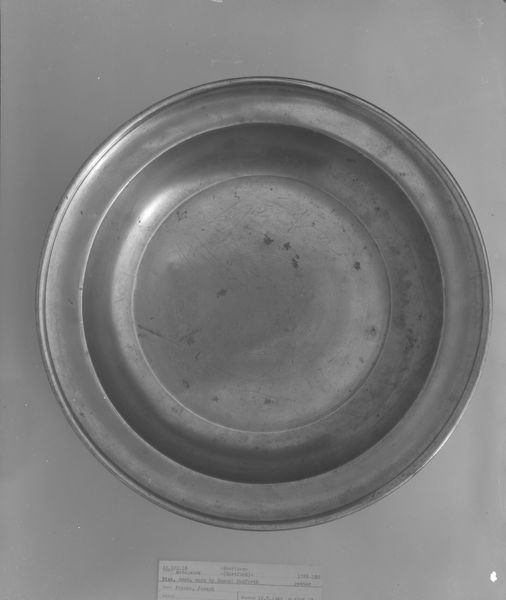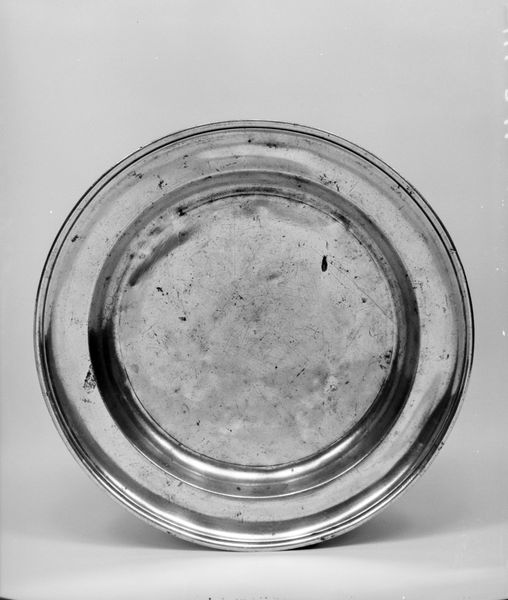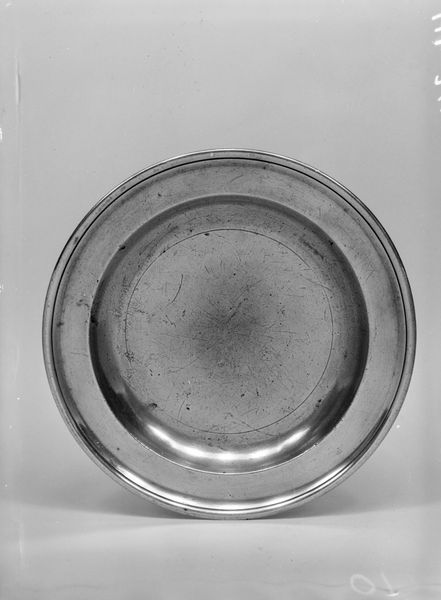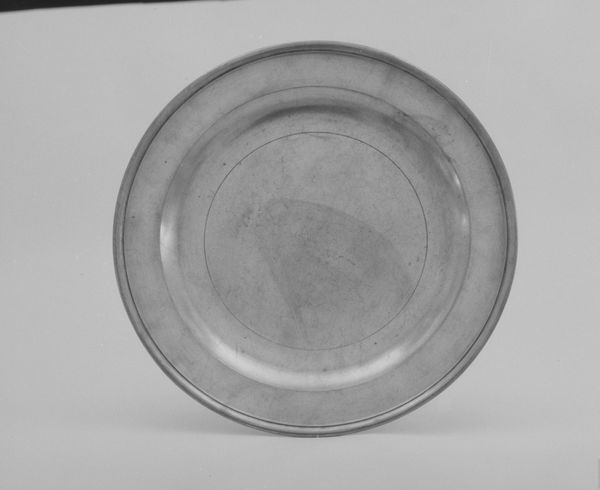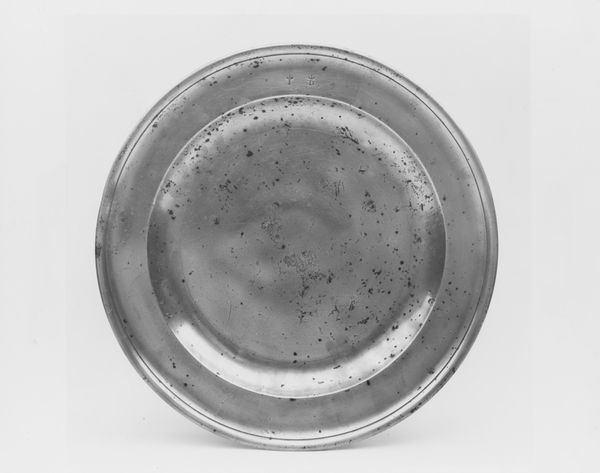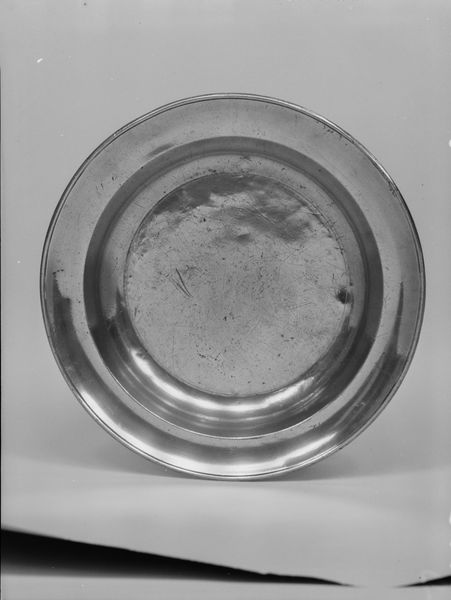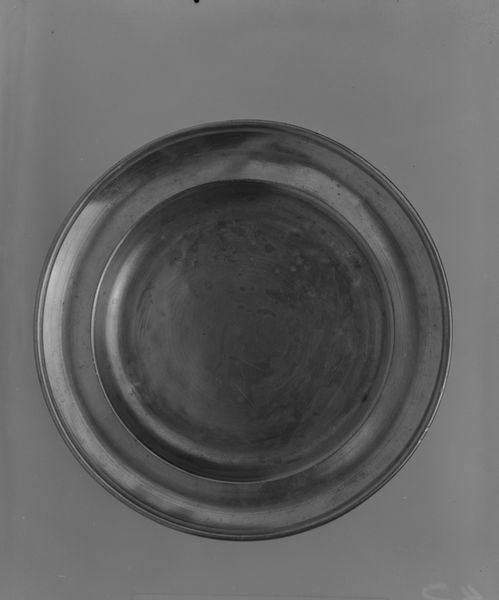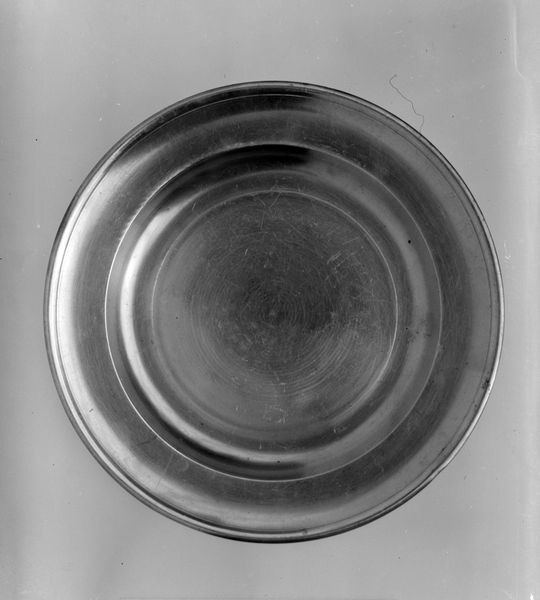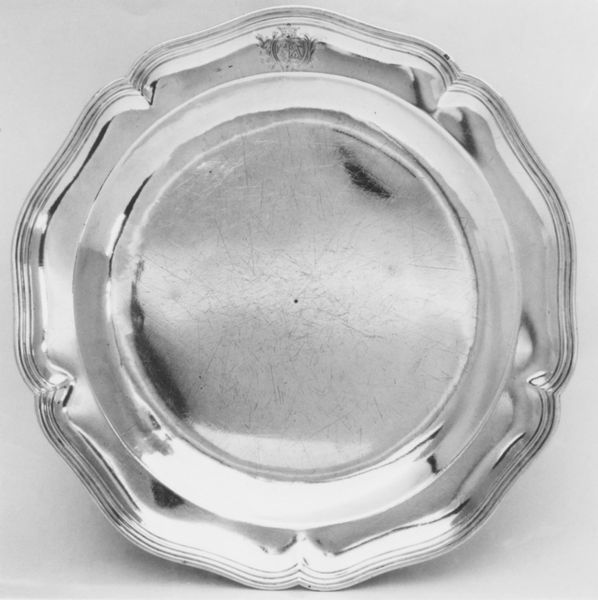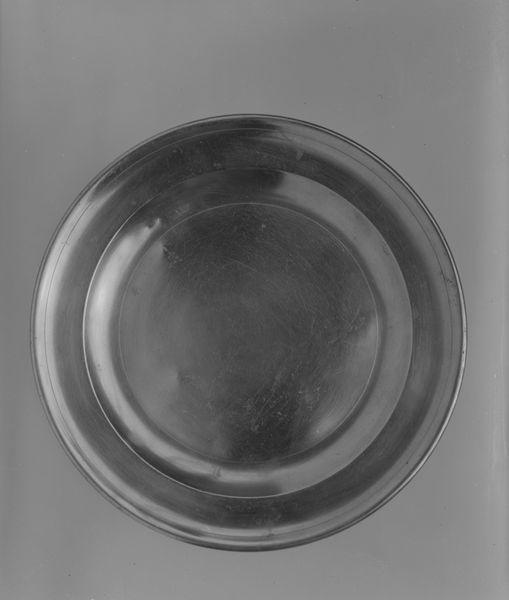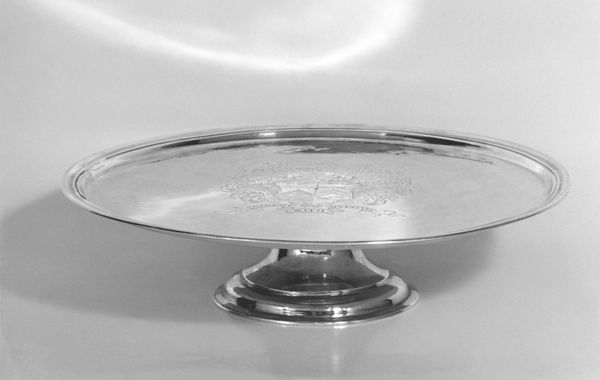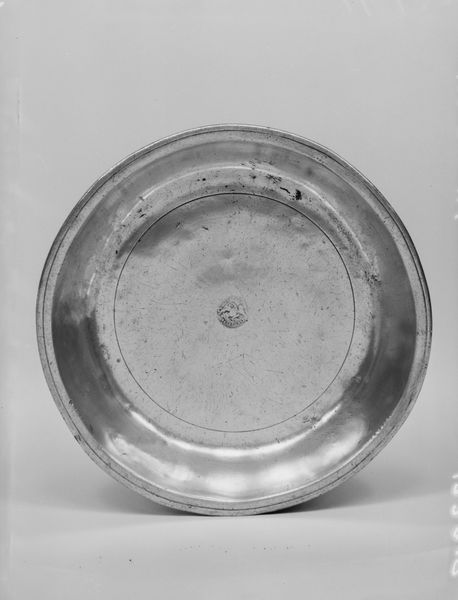
silver, photography
#
silver
#
photography
#
stoneware
Dimensions: H. 2 in. (5.1 cm); Diam. 7 3/4 in. (19.7 cm)
Copyright: Public Domain
Curator: The piece before us is simply called "Basin." It is a silver piece dating back to the 1800s. Editor: The metal has a strange glow to it, smooth as liquid but somehow cold. It feels…austere, reserved. What would they have used this for, I wonder? Curator: Well, basins throughout history served both functional and symbolic roles. Think ritual cleansing, offering. The starkness could reinforce the idea of purity, the precious material signaling the importance of its use. Editor: Right, the silver. Not just utilitarian, but signaling status. I’m curious about the process here – how many hands shaped this? What tools were used to achieve such seamless form? The silver itself probably came from a mine across an ocean… and then think of the workshops! Curator: Yes, but notice that small insignia at the center. That heraldic device roots this piece within a specific lineage, maybe a noble family. We must also remember the emotional symbolism inherent in vessels; receptacles of tears and blessings! It becomes this symbolic meeting place. Editor: A noble family though… that brings up some conflicting feelings. While the craft itself fascinates, considering who benefitted most from the raw materials and the artisans' labor adds another layer. Was this made through exploitation? And yet… that skill… Curator: Well, yes, let’s sit with those contradictions. Art serves a complicated master – reflecting our highest aspirations and lowest tendencies! This seemingly simple vessel hints at that complex social fabric. It's a powerful echo of forgotten stories, even in its silent utility. Editor: Agreed. Looking at the simplicity alongside the sheen of silver, I’m drawn back to the process, and all of its embedded values. Something so simple reflecting so much, the light barely hitting the thing the same way. Curator: Ultimately it calls attention to the cyclical, repeated act of washing and preparing which echoes life! The Basin does, I feel, have a certain poetry to it. Editor: Absolutely. And for me, tracing the transformation from raw ore to finished object helps us see it, and society then, a little differently.
Comments
No comments
Be the first to comment and join the conversation on the ultimate creative platform.
